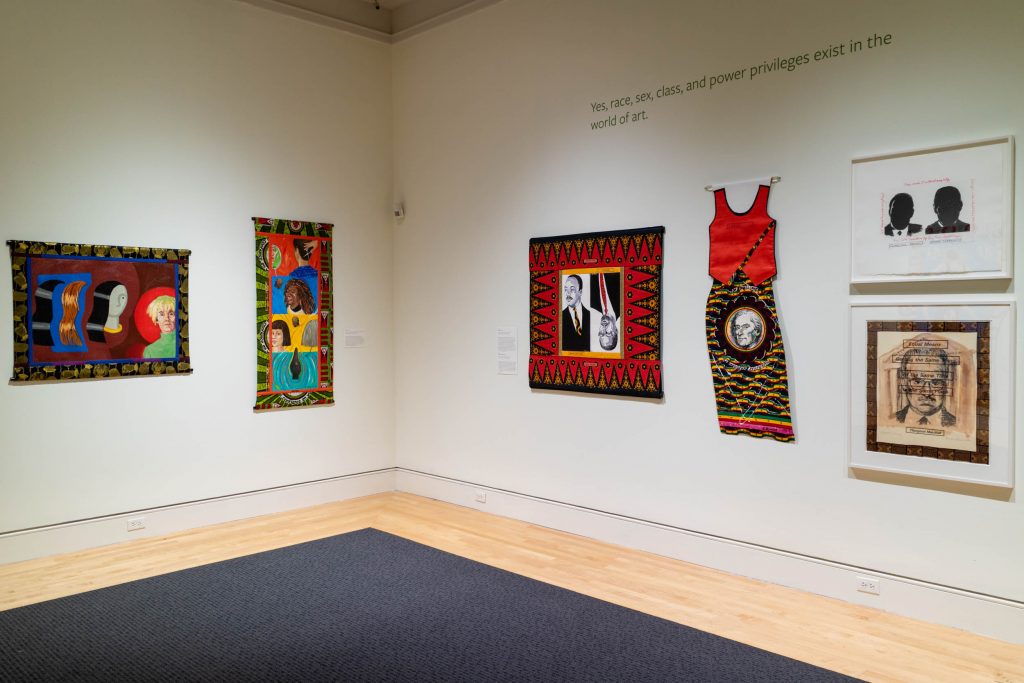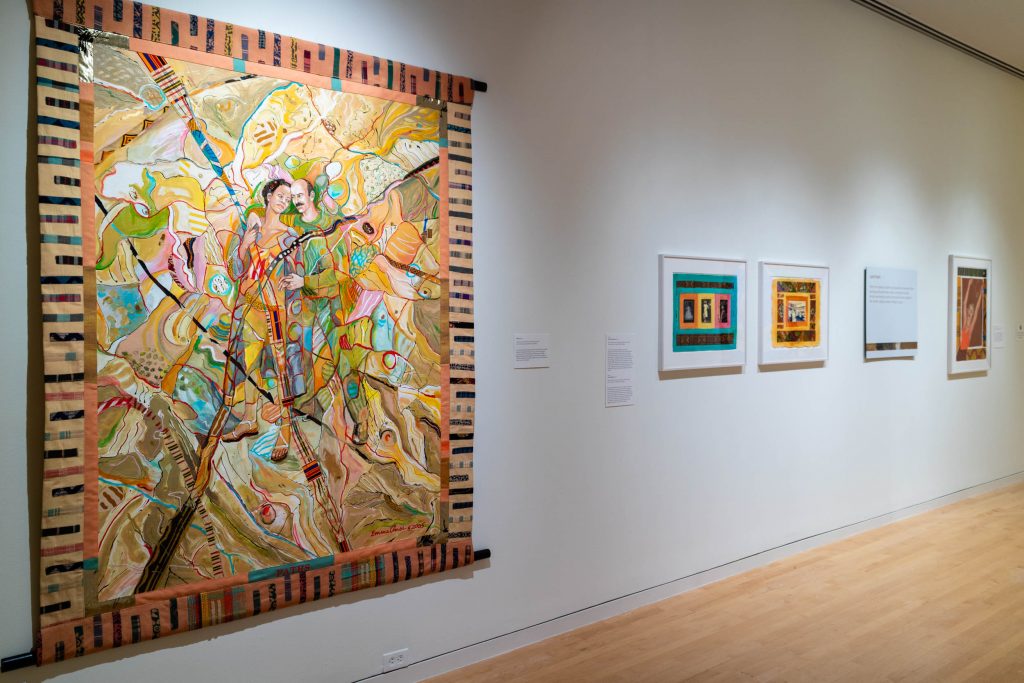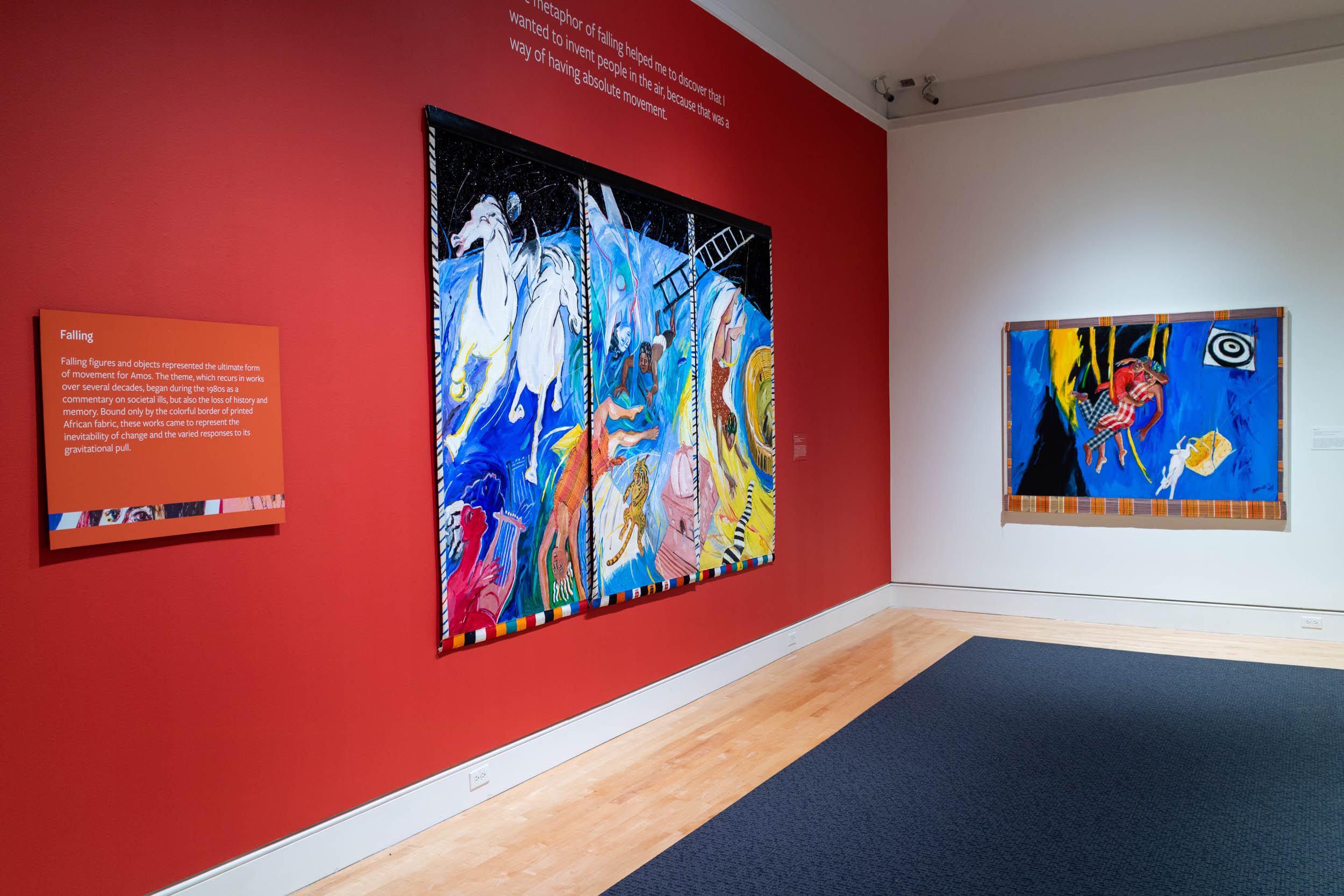There is a rare exhibit on display at the Georgia Museum of Art in Athens. This is because an exhibit of art work entirely by African-American female artists is rare indeed. The Emma Amos: Color Odyssey exhibit is exactly this, and you may view it in person at the museum, as well as on their website until April 25.
Why It’s Newsworthy: The Emma Amos exhibit is the first exhibit of entirely Black woman art displayed at UGA. This exhibit is a representation of not only the struggles that Black female artists go through to get their work on display, but also expresses the need for diversity in art museums.
Located at the Georgia Museum of Art in Athens, the “Emma Amos: Color Odyssey” exhibit has contributed to the discussion of the need for diversity in art museums.
Chad Topaz, a professor at Williams College, conducted a study to find the lack of diversity in major art museums. He found that in 18 major U.S. museums 85% of artists with their work on display are white and 87% are men.
“Efforts towards diversifying collections might be improved by first quantifying the diversity of U.S. art museum collections,” stated Topaz.

The Emma Amos exhibit is the largest exhibit showing the work of a Black female artist at the University of Georgia, as well as the first exhibit featuring Black female work displayed by a curator at UGA.
Shawna Harris, the curator for African-American art at the museum, explains the significance of Emma Amos’ work being on display and why she decided to put it together.
“Her assertion of the presence of women and their search for equity resonates with her own story as an artist. Through their determination, they created spaces that many contemporary women artists can now occupy,” said Harris.
Many women, especially those who are African-American, are not given the opportunity to have their work on display.
“Important women artists, in general, have been overlooked in the history of art. Black women have another cross to bear since research and exhibitions of individual artists of color are often lacking in scholarship,” stated Harris.
In recent years, the lack of representation has been recognized, and the hope is that many curators will turn their attention to women artists as a result.
The exhibit represents Amos’ work to grasp viewers through color, fabric and various media. The intentions that Amos had with her art is to recognize people’s assumptions about societal norms in order to potentially cause them to look at life in a more broad way.
Jasmine Elphic, a student at UGA who recently viewed the exhibit, stated “I think it is so important to see art reflecting the lives that people of color have led in today’s history, present and future.”
Art has the power to represent what the creator is feeling as well as to allow viewers to feel their own way about what they are looking at.
“It is such an amazing thing as a young Black woman to see someone that looks like you reflected in art, which is unfortunately a luxury that many demographics do not have to think about,” said Elphic.

Amos’ work has been spreading throughout several exhibits leading to the diversification of artists represented in museums. Some of these exhibits include the Tate Modern’s “Soul of a Nation: Art in the Age of Black Power” and the Brooklyn Museum’s “We Wanted a Revolution: Black Radical Women, 1965-85.”
Harris stated Amos originally did not have the intention of her work falling into the category of Black protest art. She later realized the power that her images held to counter the divisive politics that surrounded her.
The art work of Amos represents not only the need for diversity in the art world but also her struggles through racial bias as an artist.
The work of Emma Amos will be on display at the Georgia Museum of Art until April 25, 2021.
Anna Spinks is a fourth-year majoring in journalism in the Grady College of Journalism and Mass Communication at the University of Georgia.









Show Comments (1)